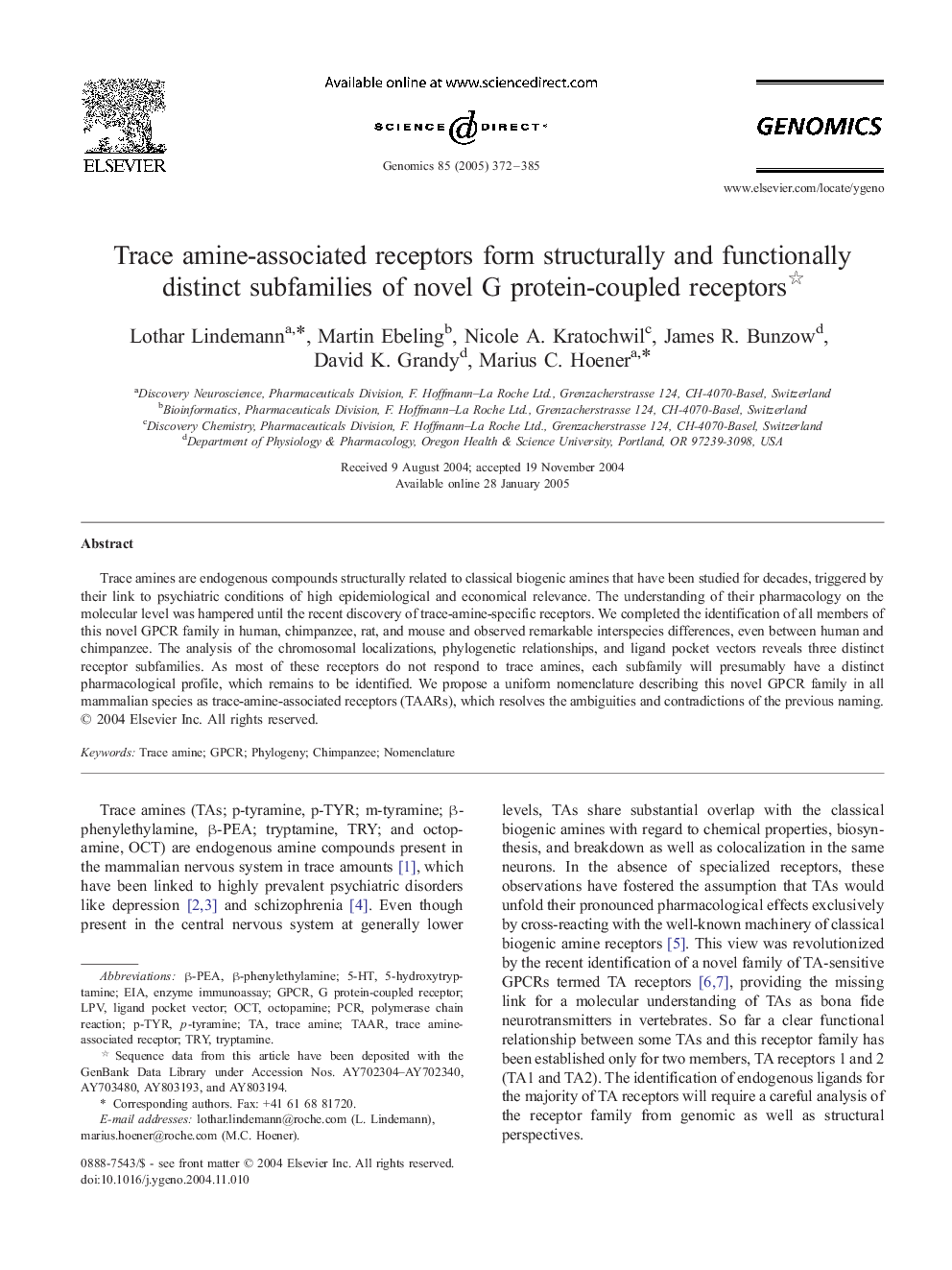| Article ID | Journal | Published Year | Pages | File Type |
|---|---|---|---|---|
| 9131999 | Genomics | 2005 | 14 Pages |
Abstract
Trace amines are endogenous compounds structurally related to classical biogenic amines that have been studied for decades, triggered by their link to psychiatric conditions of high epidemiological and economical relevance. The understanding of their pharmacology on the molecular level was hampered until the recent discovery of trace-amine-specific receptors. We completed the identification of all members of this novel GPCR family in human, chimpanzee, rat, and mouse and observed remarkable interspecies differences, even between human and chimpanzee. The analysis of the chromosomal localizations, phylogenetic relationships, and ligand pocket vectors reveals three distinct receptor subfamilies. As most of these receptors do not respond to trace amines, each subfamily will presumably have a distinct pharmacological profile, which remains to be identified. We propose a uniform nomenclature describing this novel GPCR family in all mammalian species as trace-amine-associated receptors (TAARs), which resolves the ambiguities and contradictions of the previous naming.
Keywords
Related Topics
Life Sciences
Biochemistry, Genetics and Molecular Biology
Genetics
Authors
Lothar Lindemann, Martin Ebeling, Nicole A. Kratochwil, James R. Bunzow, David K. Grandy, Marius C. Hoener,
